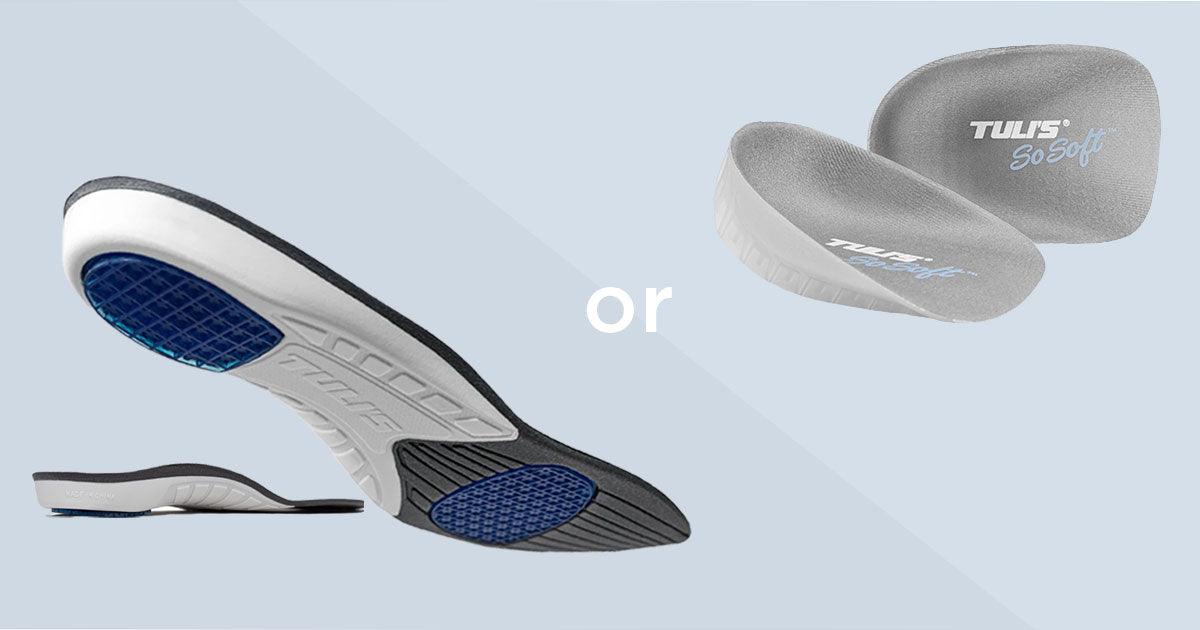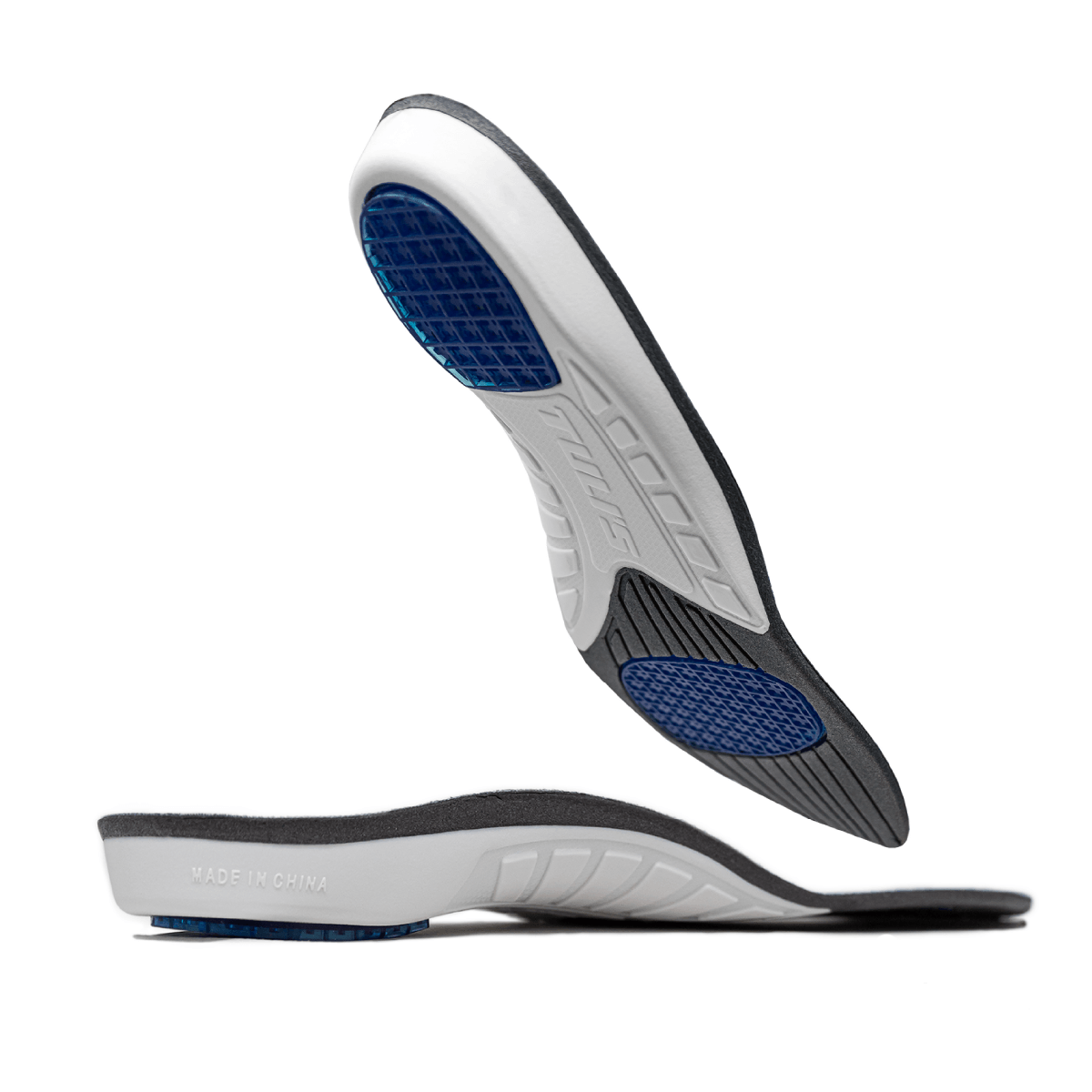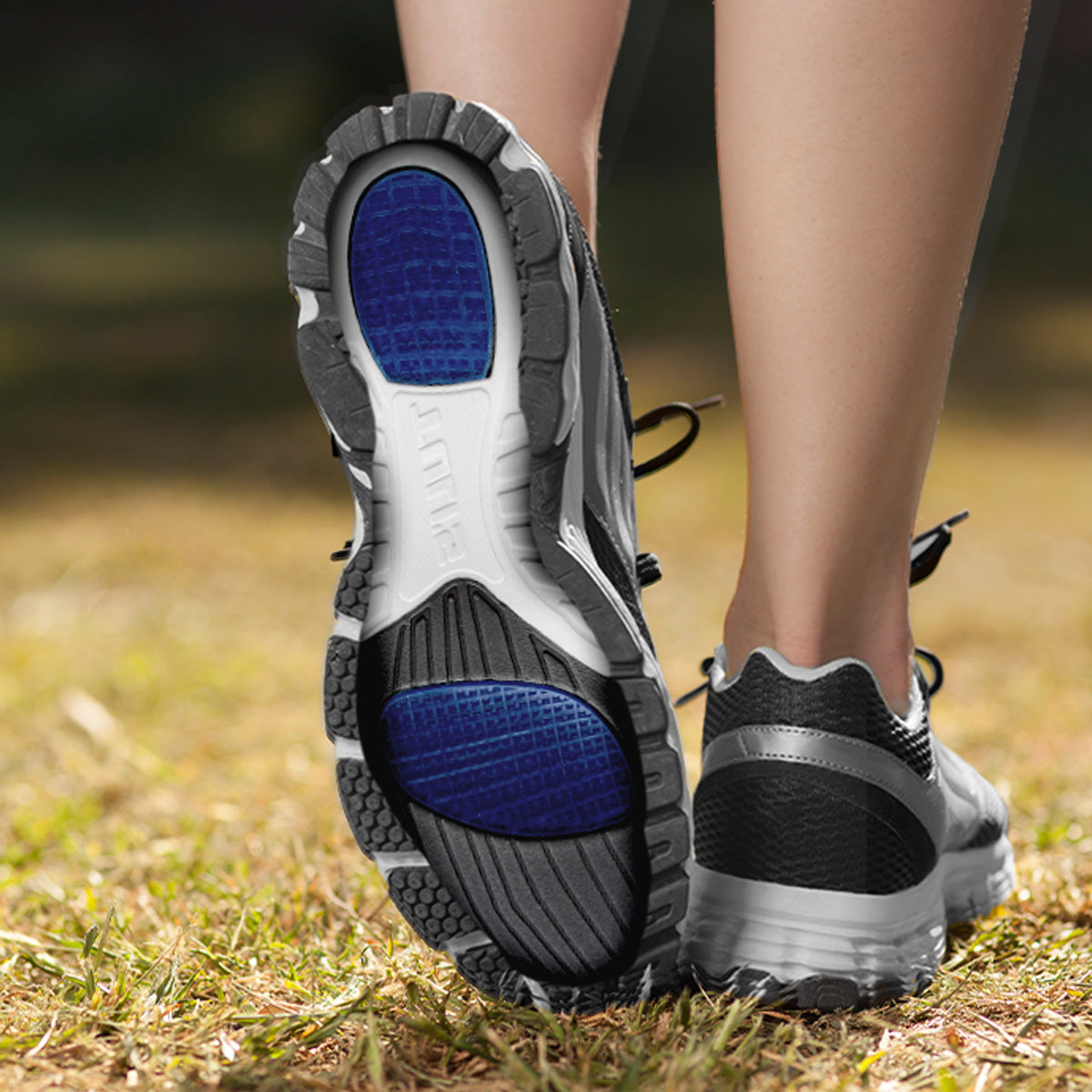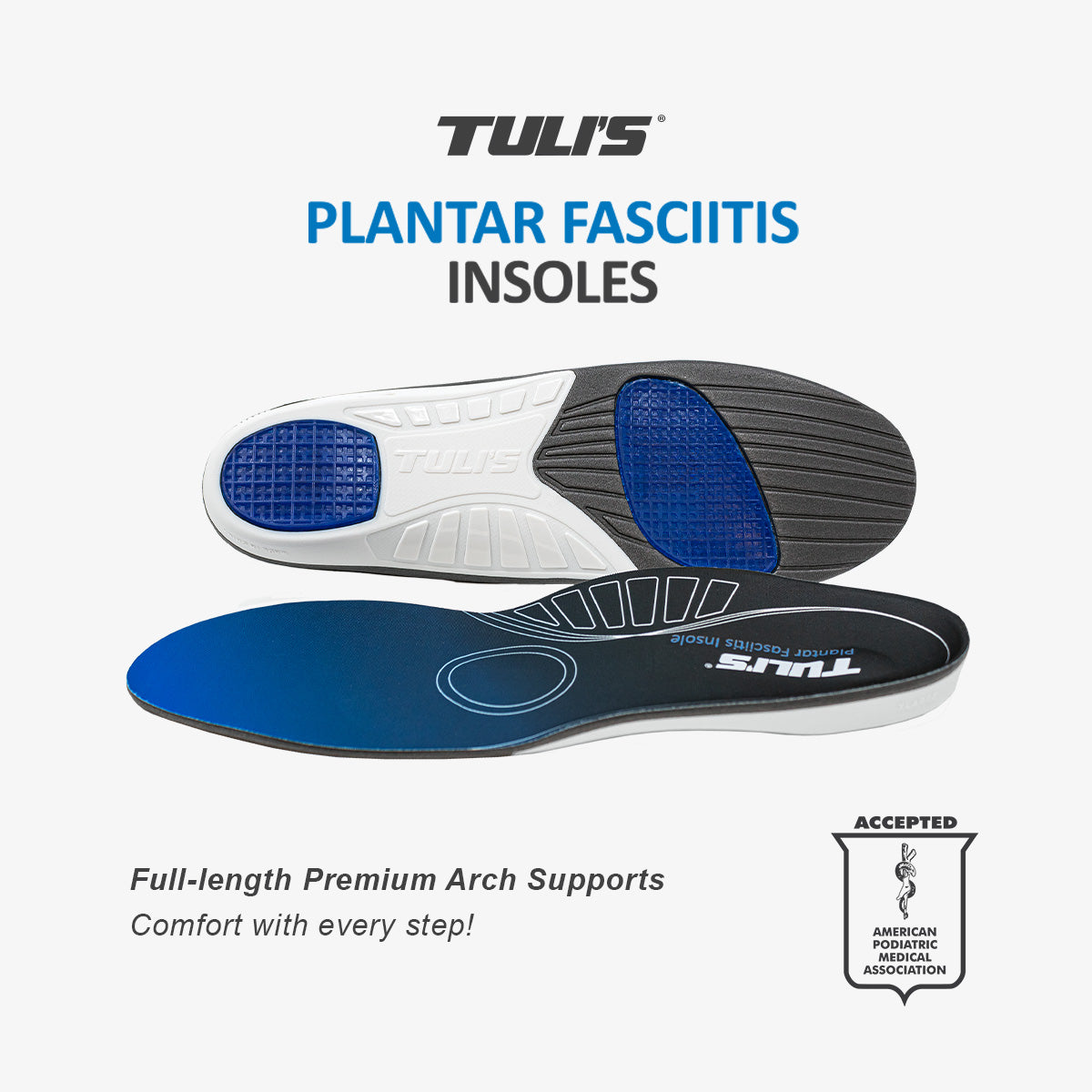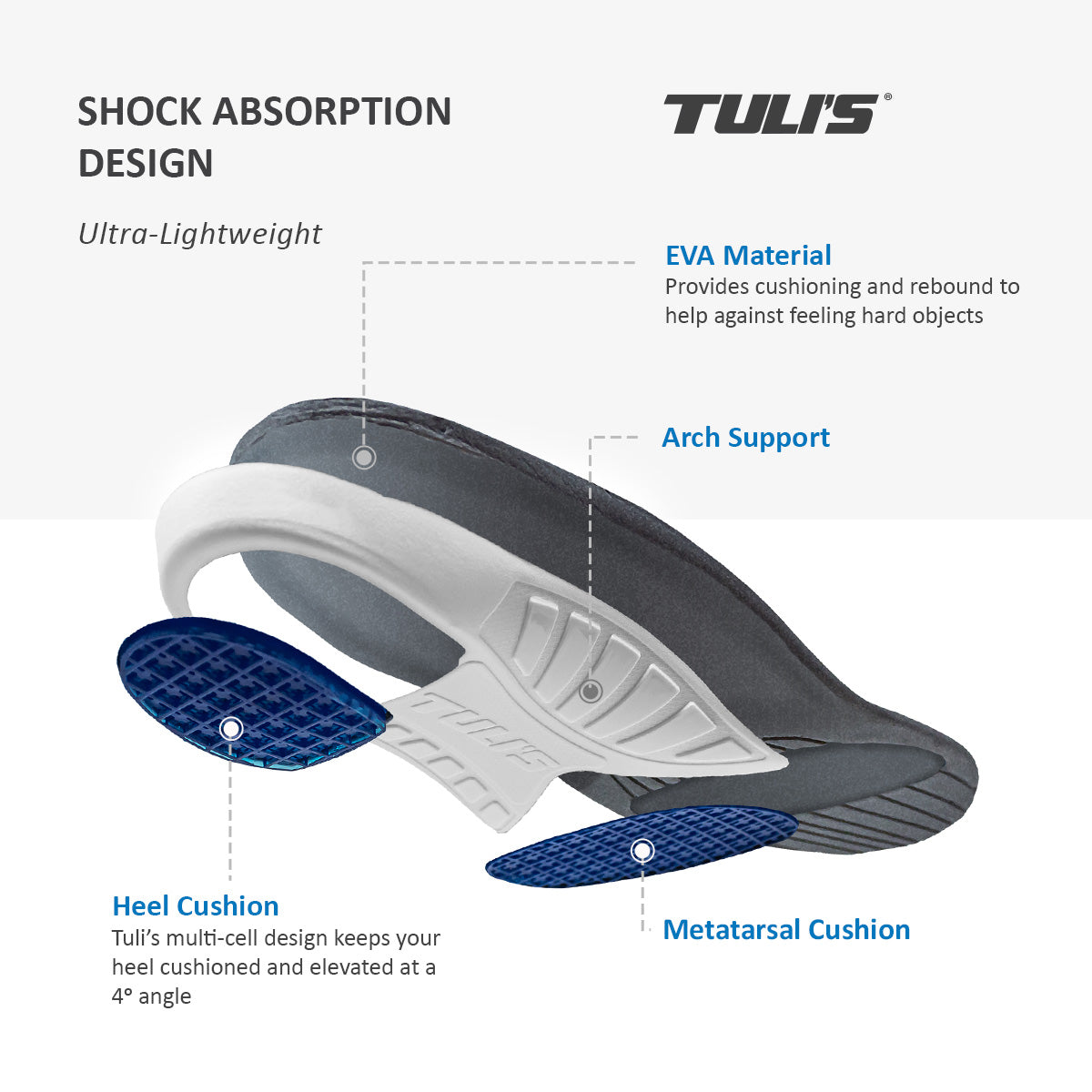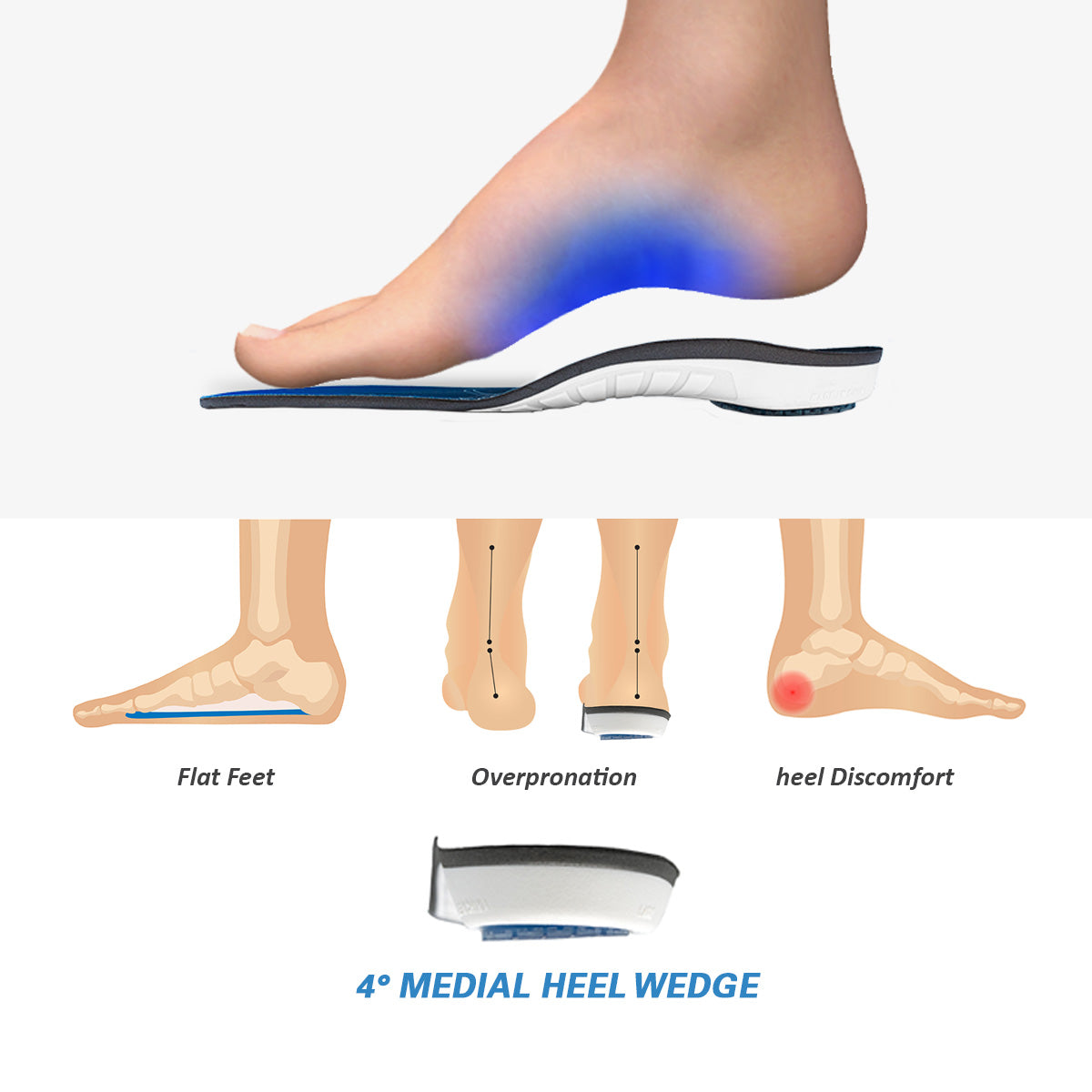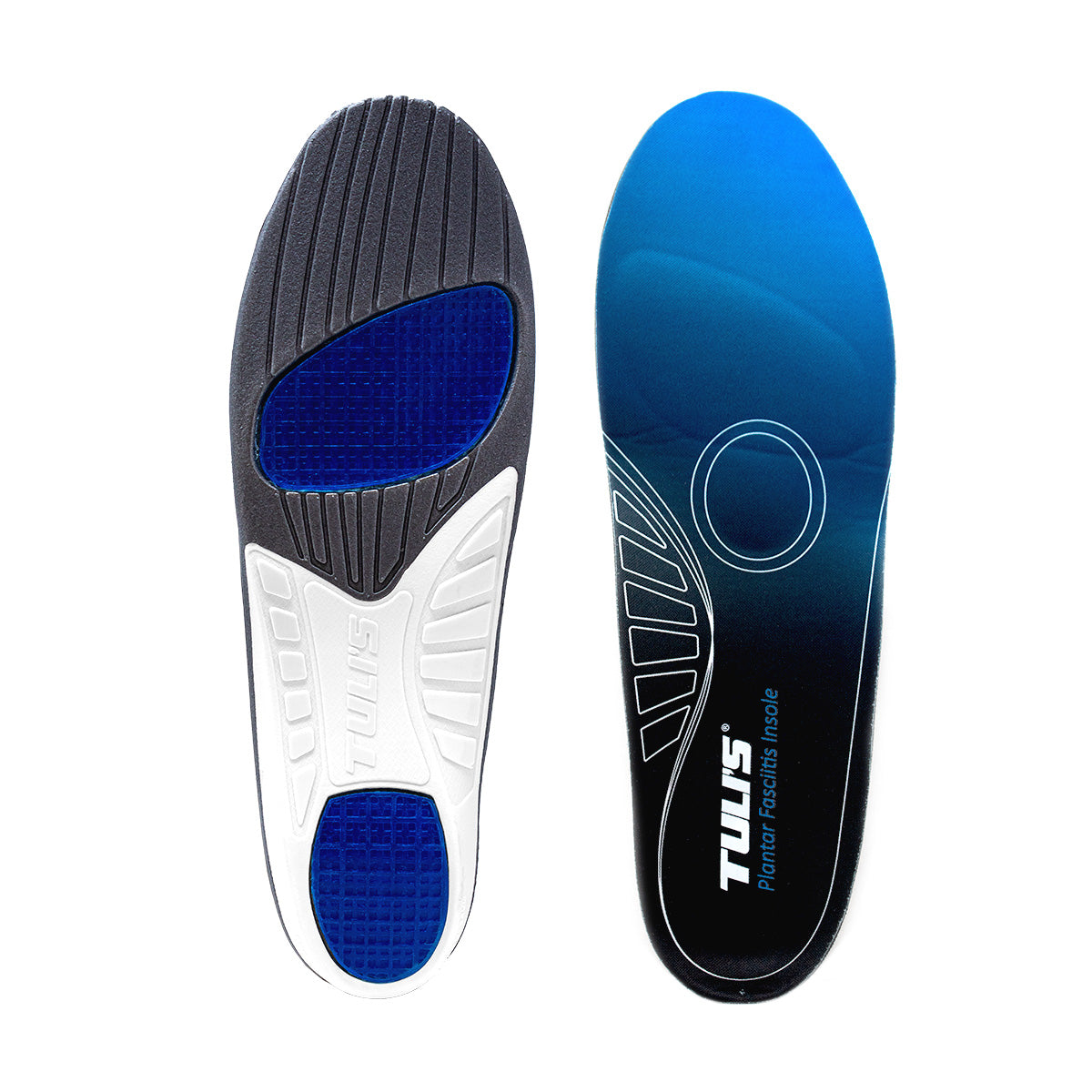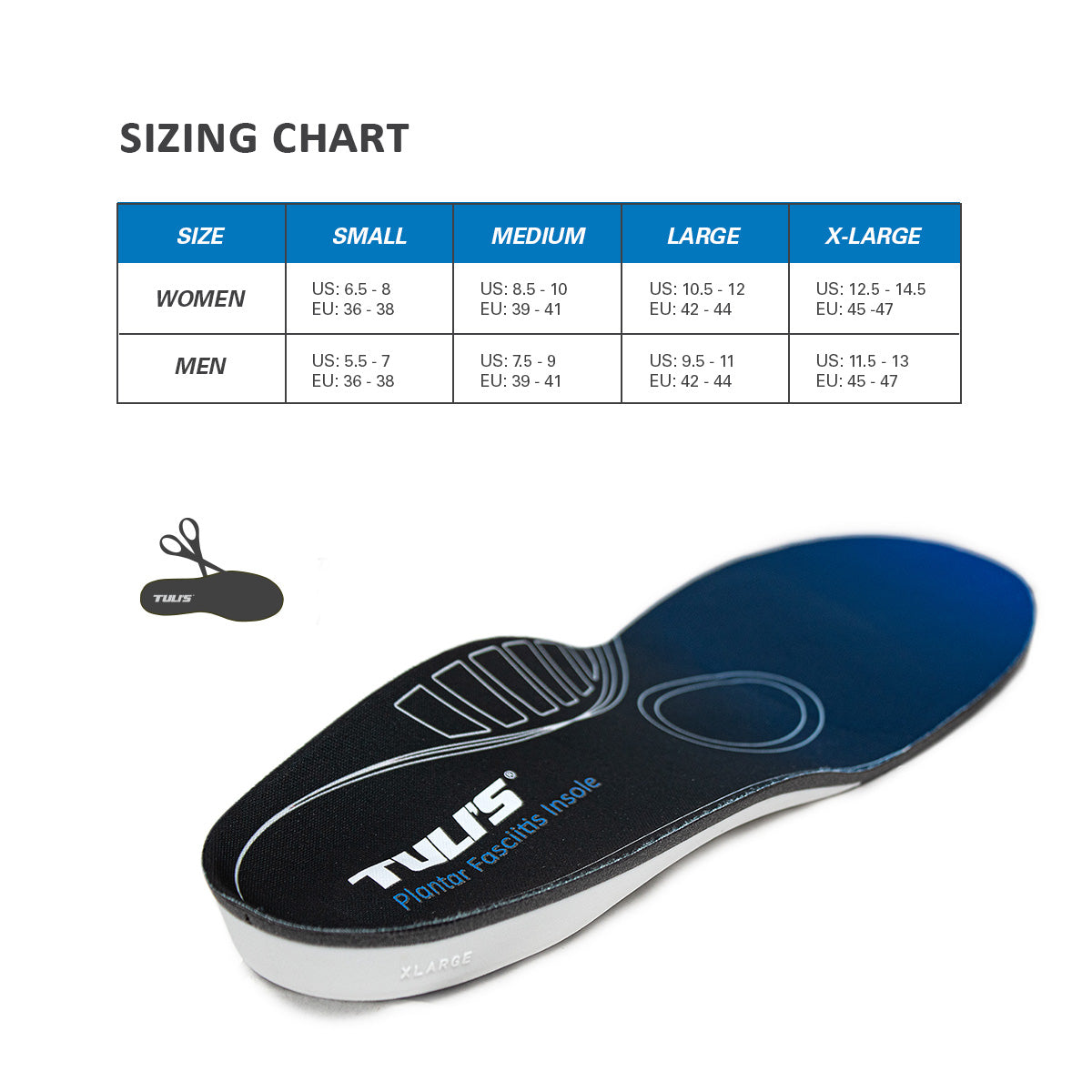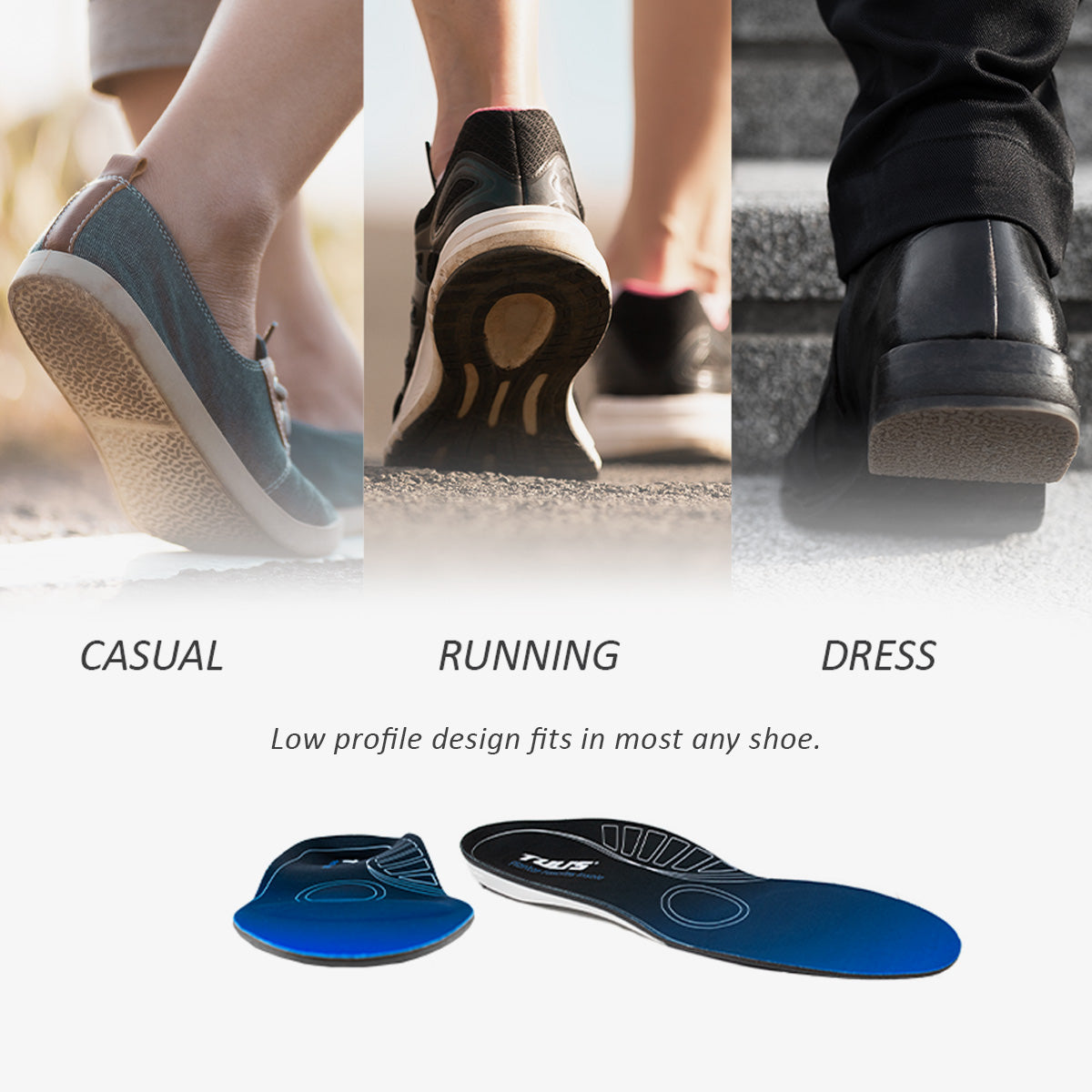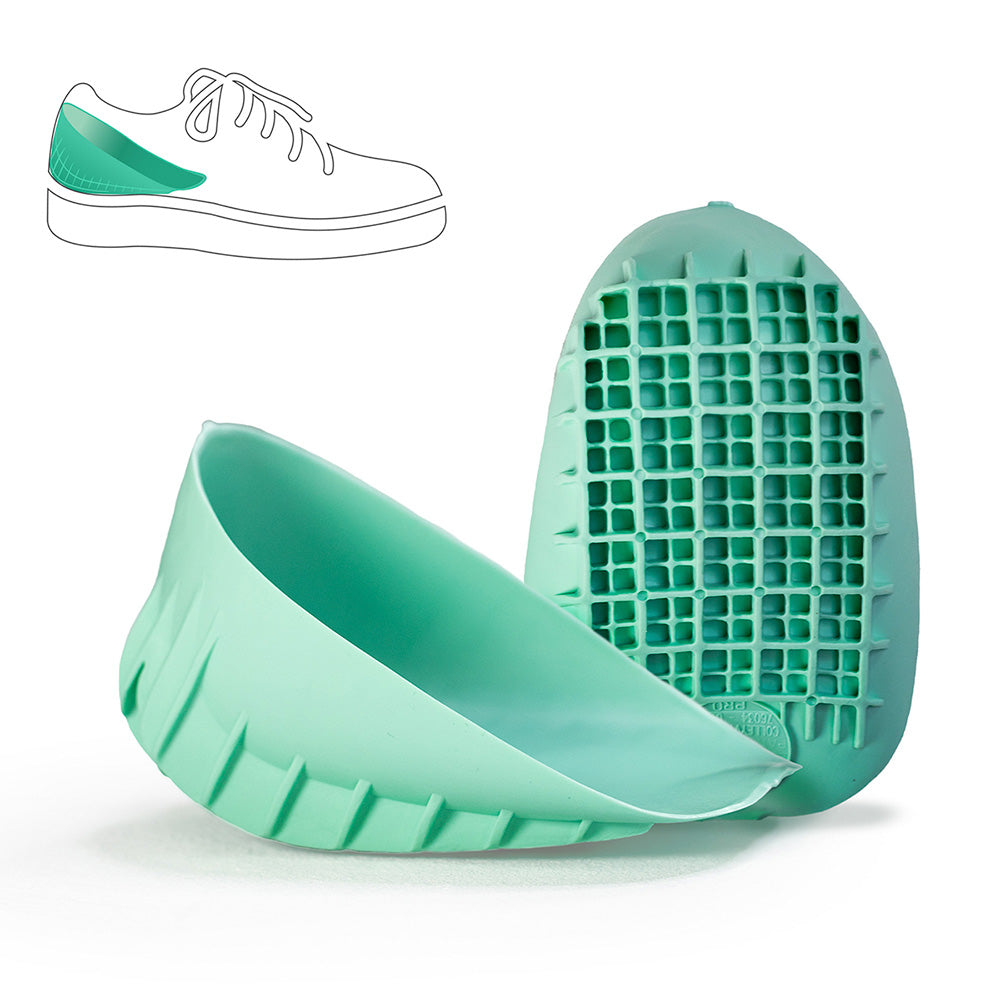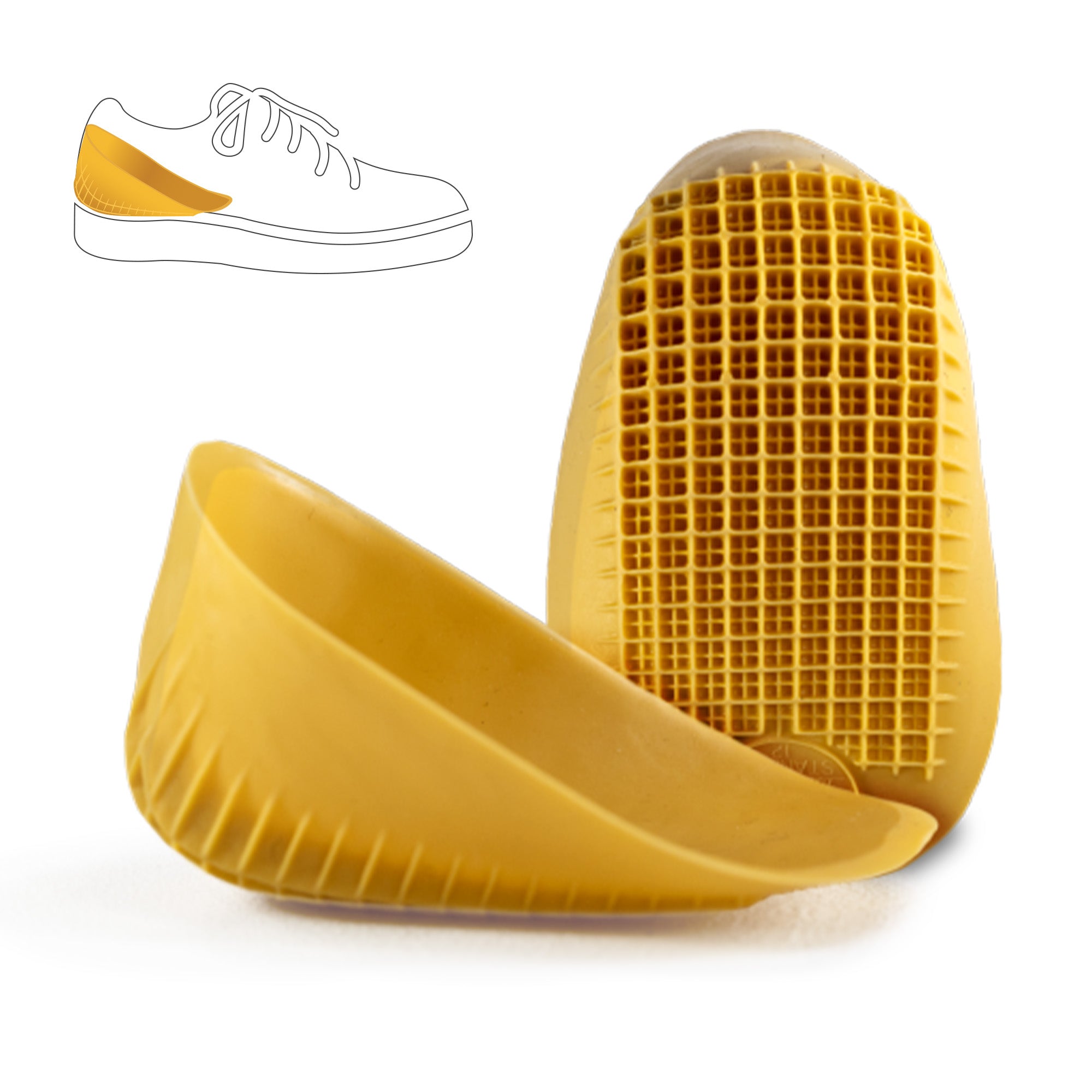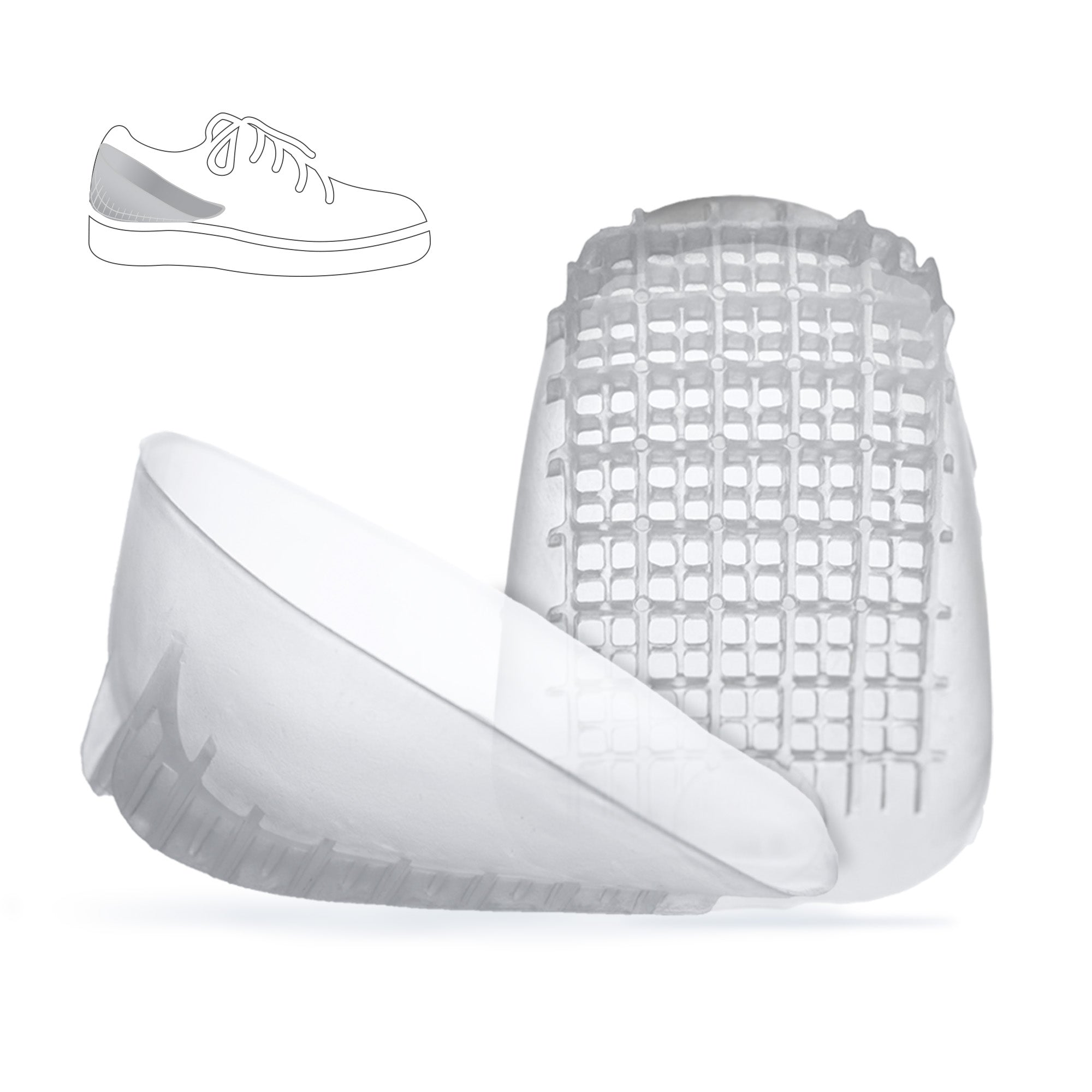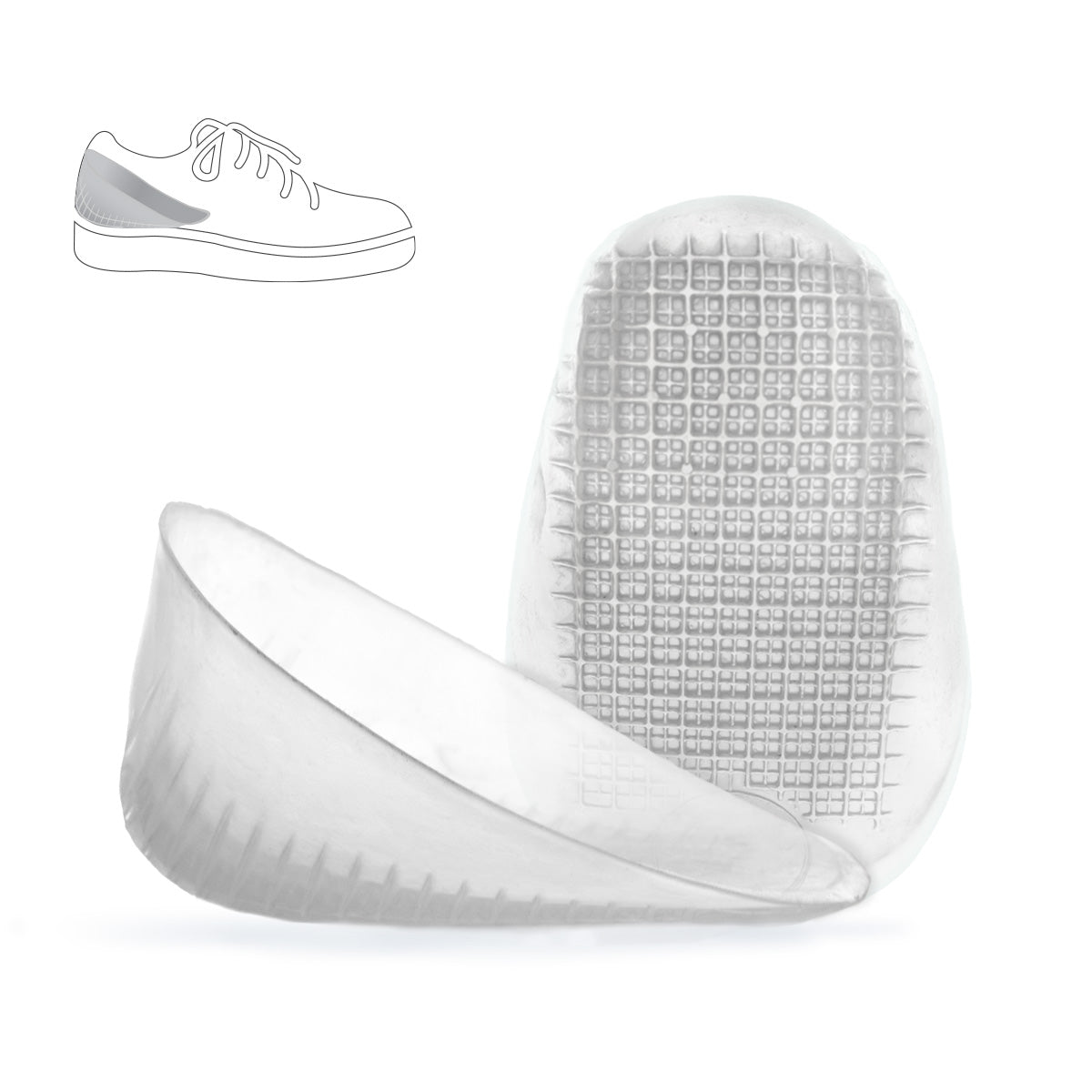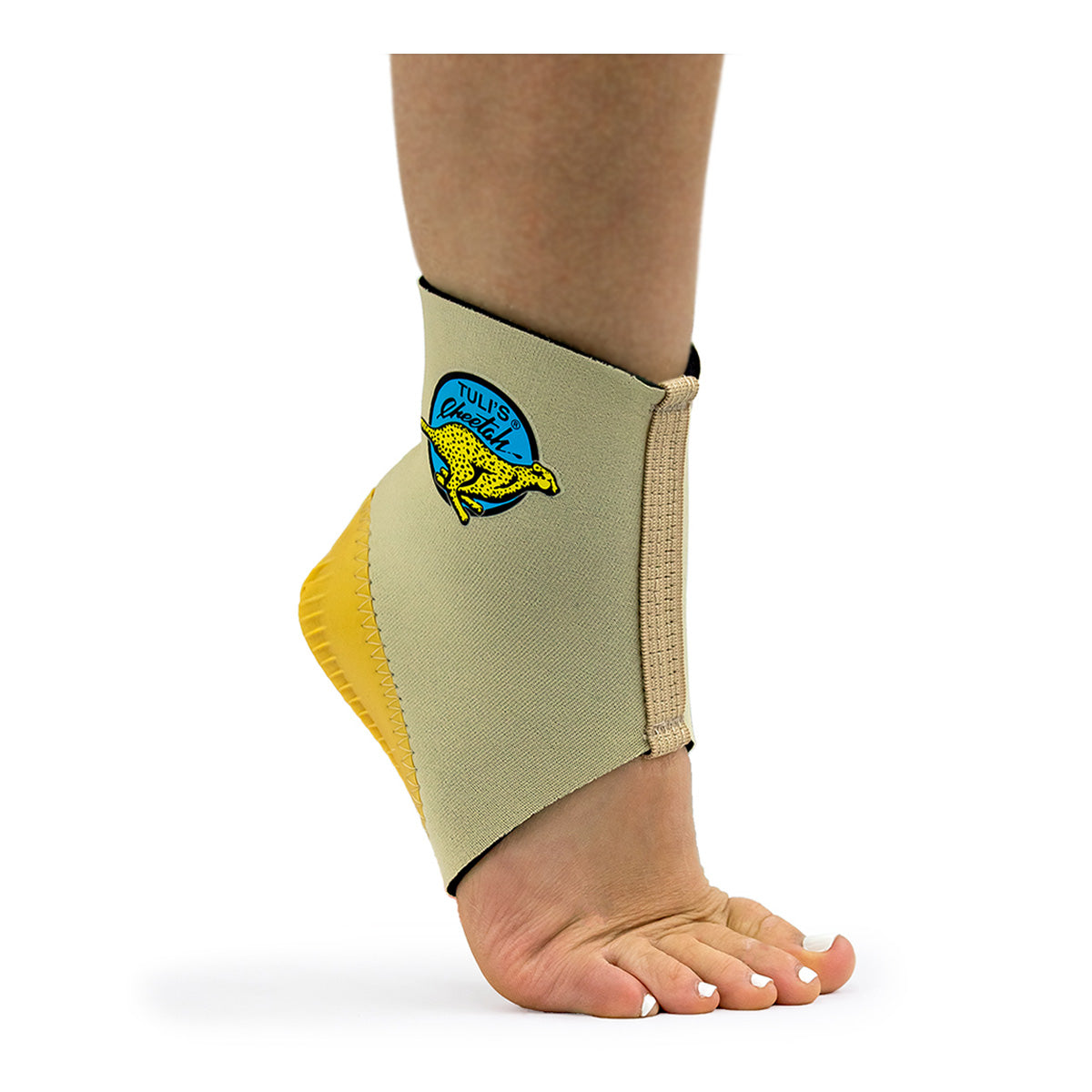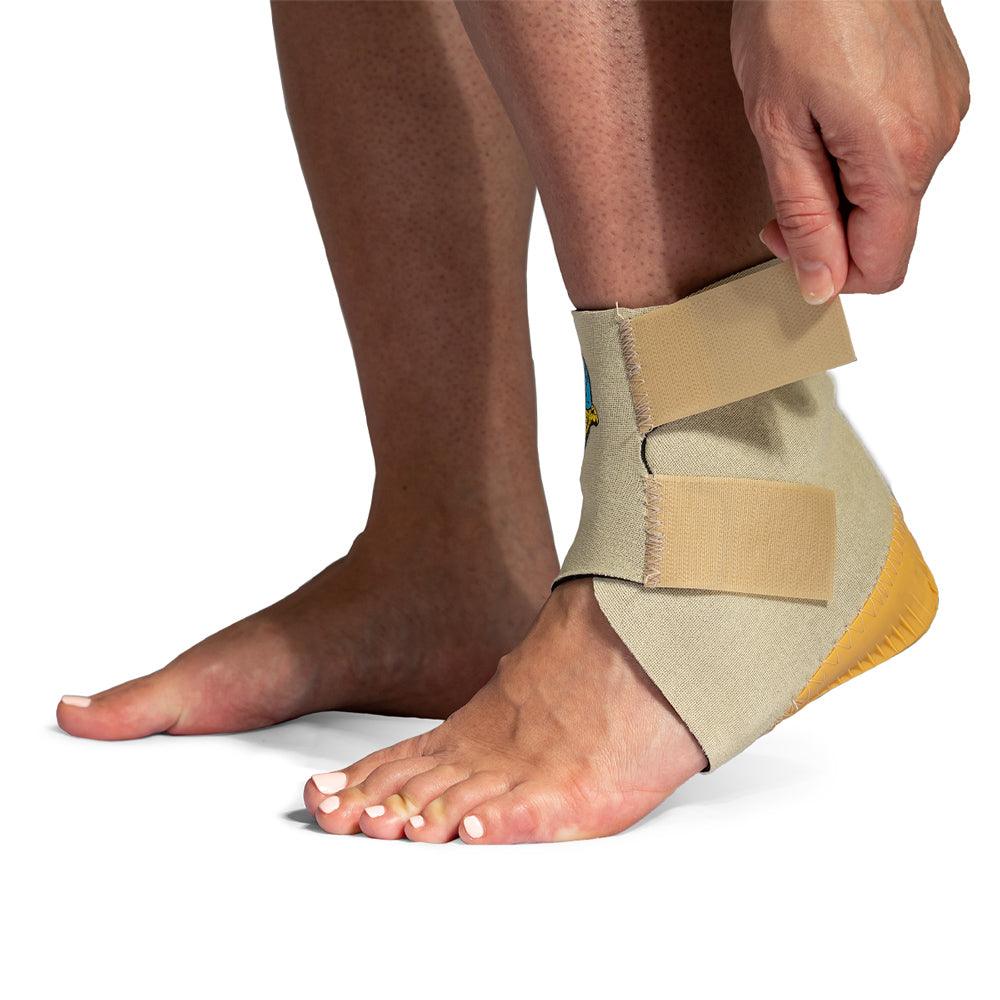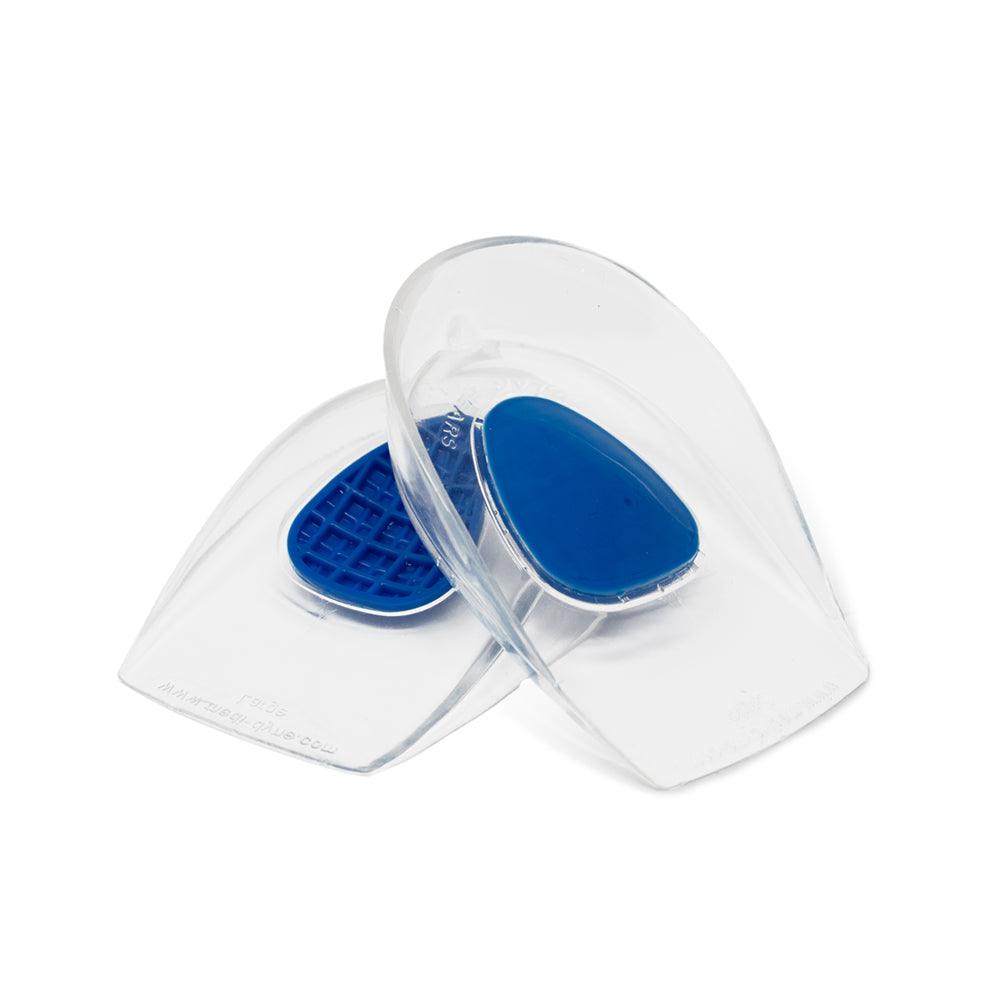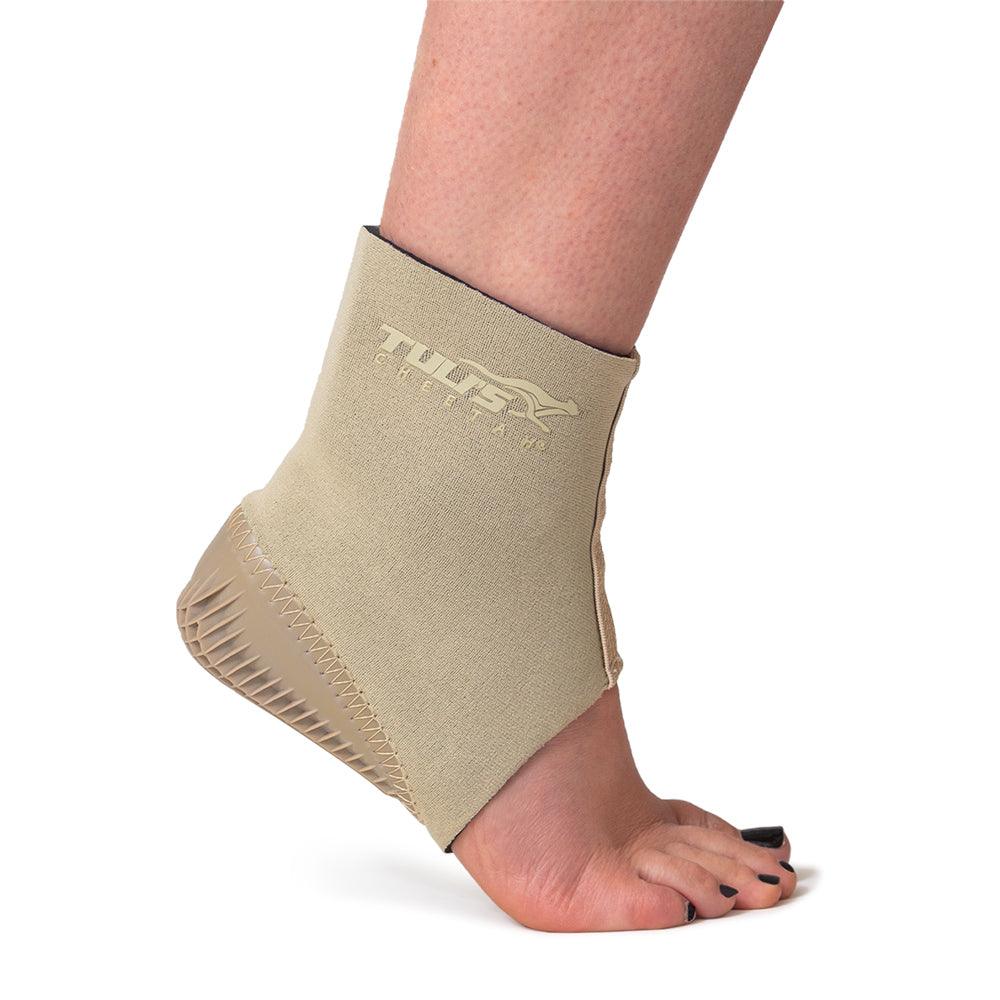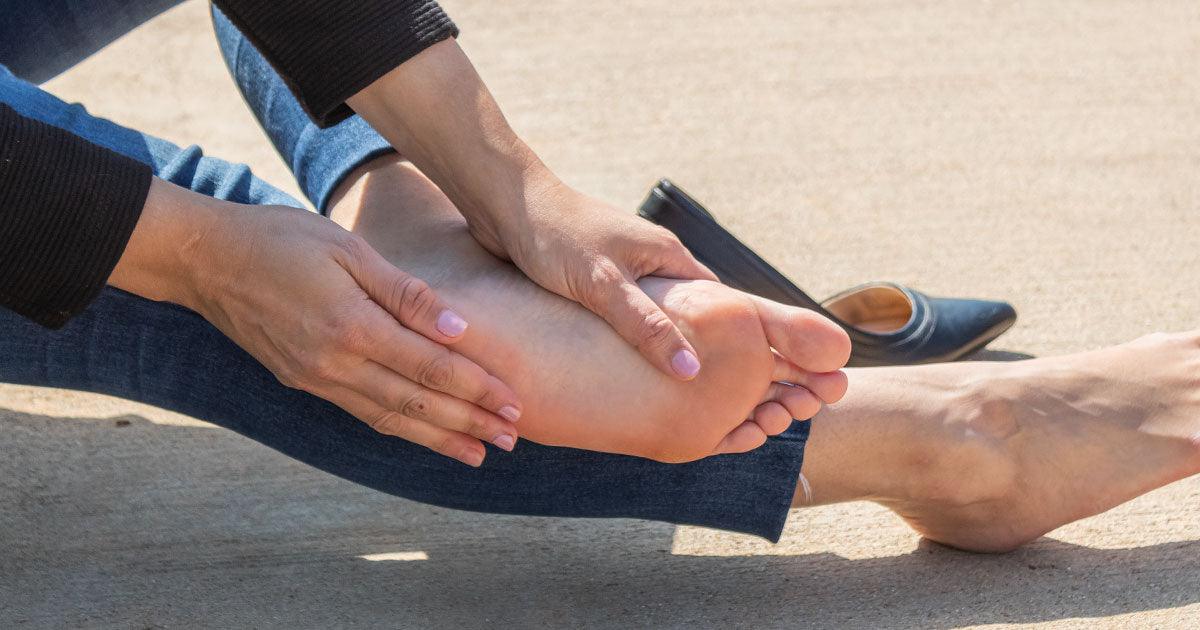Plantar fasciitis is the most common cause of heel pain. While the prevalence of the condition is still under investigation, studies have shown that approximately one million patients suffering from heel pain symptoms as a result of the condition visit a medical professional each year. In fact, plantar fasciitis reportedly accounts for almost 15% of all foot-related pain symptoms doctors encounter.
While the severity of the condition will help your medical professional to determine the best course of action, to reduce pain one of the most common treatment methods is to use a plantar fasciitis insole.
Table of contents:
- What’s the difference Between a heel cup and full-length insole?
- Heel Cups
- Full-Length Insoles
- Which insole is right for me?
- Choosing the Right Plantar Fasciitis Insole for Your Foot Pain
What’s the Difference Between a Heel Cup and a Full-Length Insole?
Insoles for plantar fasciitis come in various forms. However, heel cups and full-length insoles are considered the simplest treatment options since they can be fitted to the individual.
The simplicity of this treatment option is very appealing. However, many often confuse the differences and benefits of heel cups and full-length insoles. The good news? While they share several similarities, they are quite easy to tell apart:
Heel Cups

These are small shoe inserts that are designed to help provide extra support to the heel of the foot. They are inserted in the back of your shoes, and once installed, they are virtually unnoticeable. Luckily, most stores carry some form of heel cup for those looking for some immediate relief. However, not all heel cups are built to last.
For example, Tuli’s Heel cups come in many forms and help cater to the specific needs of the individual wearing them. These heel cups were designed by a podiatrist and have a shock absorption design, which consists of a multi-cell, multi-layer design.
Full-Length Insoles

These can be found in nearly any shop that sells footwear or any pharmacy. While a generic insole can be somewhat helpful by providing a little extra padding in worn-out shoes, plantar fasciitis insoles are designed for those suffering from the many symptoms of the condition.
While regular insoles are simply made with a few layers of padding or gel, plantar fasciitis insoles provide the wearer with extra support in the heel, shock absorption, and help to evenly distribute the stress on your feet so that it’s not concentrated in the heel.
Which Insole Is Right for Me?
When shopping for the right insoles, it’s essential to get the ones that treat the concerned condition. This is important to note because many people mistake their plantar fasciitis pain for heel spurs and vice versa.
Contact your doctor to help you define your pain and direct you to the right solution.
For example, heel spurs are a sharp bony growth found at the front side of the heel bone. This bony growth typically points toward the arch of the foot, causing inflammation that can lead to pain in the back of the foot. In this case, a heel cup may be the best solution to help you find relief.
Plantar fasciitis, on the other hand, is inflammation in the plantar fascia, a broad band that runs along the bottom of each foot – between the heel and the forefoot – connecting the heel bone to the toes. While a heel cup can help support your foot and help relieve your pain, many find that a full-length insole helps them find more substantial relief.
Full-length insoles can be extremely effective for those looking for long-term relief from plantar fasciitis. That’s because they not only have a properly aligned heel cushion built-in but also adequate arch support, shock absorption, and they fit completely inside your shoe, limiting the chance of it moving when you do.
Tuli's Plantar Fasciitis Insoles
An excellent example is Tuli’s Plantar Fasciitis Insoles. These provide premium arch support and include a 4-degree medial heel wedge that helps to prevent over-pronation, which can lead to further stress and inflammation on the plantar fascia.
★★★★★ 5 Star Review
The best insoles yet.
"I gotta say, I was desperate when I found these insoles. I suffer from plantars fasciitis and work 10+ hour shifts in a warehouse and I'm on my feet 95% of my shift so I was in constant agony with the Dr. Scholl's insoles I was using.
So when I came across these, of course I was hoping and wishing that they'd help and I'm so incredibly happy I ordered them! It took a couple of days for my feet to almost fully stop aching and throbbing but I literally have almost no pain at all now. I just can't believe it!
I am so eternally grateful for this company to have made this for us. Thank you so much for these insoles, they really made a difference in my life!!! I absolutely recommend them to everyone suffering from terrible foot pain 😃" - Vanessa I.
Choosing the Right Plantar Fasciitis Insole for Your Foot Pain
Finding the perfect insoles to help alleviate your plantar fasciitis pain can be an intimidating process. With so many options to choose from, it’s no wonder so many individuals choose the easy option at the drugstore checkout.
The problem with that is those are a one-size-fits-all solution. And while they may work for some, they aren’t designed to treat the very specific needs of each individual. That’s why it’s essential to talk with a medical professional and learn about your treatment options. Heel cups may be the right solution for some, but the full-length insert may be more suitable for others. So, don’t take a chance and risk worsening your condition.
Instead, talk to a team of professionals who will not only ask the right questions to diagnose your condition but also provide you with podiatrist-approved products that are proven to work.
Both Tuli’s Plantar Fasciitis Insoles and Heel Cups are designed to help treat plantar fasciitis and its many symptoms by providing your foot with the support they need. If you’re not sure which direction to go, then contact our team today.
PLEASE NOTE: The information on this website and article is for information only and should not be used as a substitute for consulting your doctor. Consult your doctor for proper diagnosis and rehabilitation.




